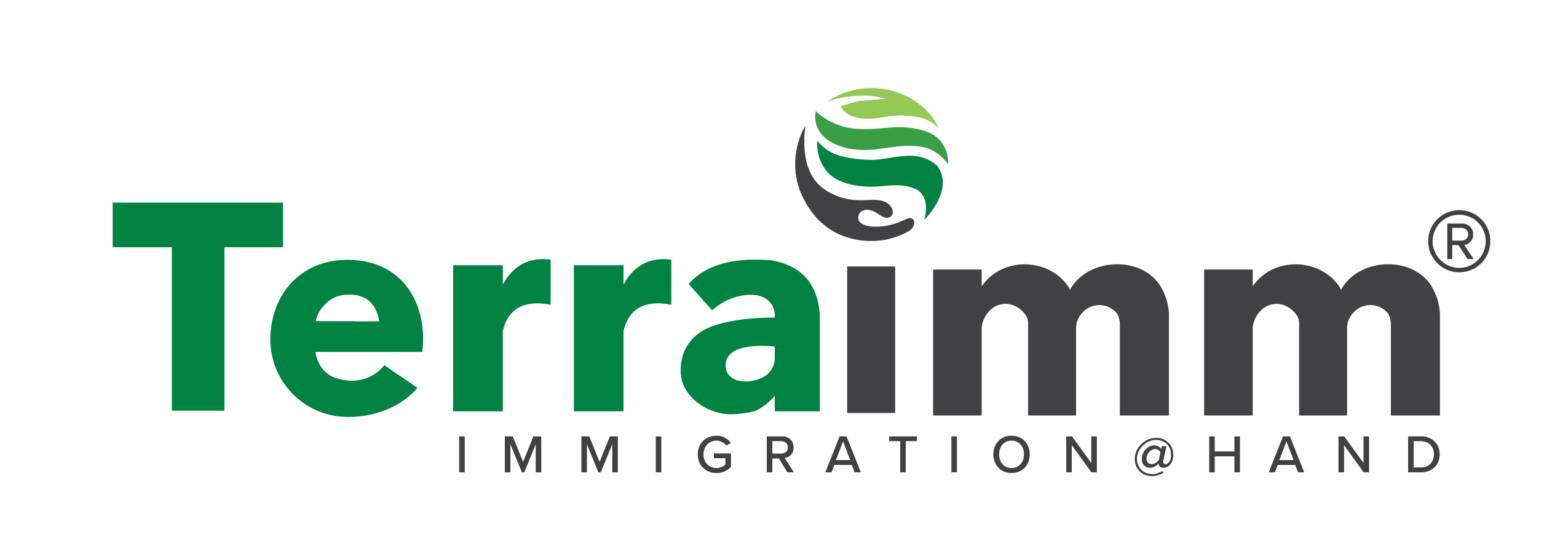For more information:
P-1B A Member of an Internationally Recognized Entertainment Group | USCIS
P-3 Artist or Entertainer Coming to Be Part of a Culturally Unique Program | USCIS
Overview:
- What is a P visa?
- What are the benefits of a P visa?
- P visa requirements
- What are the responsibilities of the P visa petitioner?
- P visa process
- What documents are required for the P visa?
- P visa fees
- P visa processing time
- Conclusion
1. What is a P visa?
The P visa is intended for sportsmen and performers. It enables them to participate in sporting events or perform in the United States. The P visa is divided into four categories:
- P-1 visa: Athletes can use it as an individual or as a team. These holders are people visiting the United States to compete in sporting events. Those coming to participate in an entertainment group can also use it.
- P-2 visa: It is used by entertainment groups involved in reciprocal exchange programs.
- P-3 visa: It is intended for culturally diverse entertainment ensembles.
- P-4 visa: It is intended to be used by spouses and dependent children. It allows them to enter the United States, but it prevents them from working while they’re visiting.
In addition, key support people may be classified into any of these three groups. Anyone whom the primary beneficiary will require to perform properly is considered an essential support worker (bandmates, coaches, etc.) The P Visa is suitable for persons who are actively engaged in their profession. It is not ideal for teaching at camps or participating in promotional activities.
A P-1 visa is valid for up to 5 years for an individual athlete, with a single 5-year extension. All other P visas will be allowed for a period of no more than one year. Some extensions may be feasible for long-term events or performances. There aren’t any limits on the number of P visas that can be issued each year.
2. What are the benefits of a P visa?
Athletes and entertainers can work in the United States
Foreign sportsmen and entertainers can work in the United States with this visa.
Dependent spouses and children are eligible to come to the United States.
A P-4 visa allows the athlete or entertainer’s spouse and dependent children to enter the United States. This permits them to remain with the primary beneficiary while working in the United States. Your spouse and/or children may be unable to work during this period, but they can attend school.
You do not have to be “of exceptional ability”
Participants in the P visa must be internationally famous. This is a less strict qualification than the O visa, which needs “extraordinary ability”. As a result, the P visa is a better option for people who do not qualify for the O visa.
3. P visa requirements
Each P visa category (P-1, P-2, and P-3) has somewhat different criteria. The eligibility criteria for sportsmen and entertainers vary.
For people seeking a P visa, the following conditions must be satisfied:
You must have nonimmigrant intent
- All applicants must demonstrate that they have a domicile outside of the country to which they will return after their visa expires.
- The primary beneficiary might apply for permanent residency at the same time. As a result, applying for an immigrant visa has no bearing on the granting of a P visa petition. On top of that, those arriving as critical support employees may not apply for permanent residency at the same time. If they have a pending or approved application for permanent residence, they may be denied a P visa.
- The standard for demonstrating nonimmigrant intent is higher for individuals seeking P-2 and P-3 visas than for those seeking P-1 visas. Applicants for these visas may be required to present further proof of nonimmigrant intent.
Your work must not adversely affect American workers
The P petition will be refused if the Department of Labor has verified that there is a strike or labor dispute at the worksite. The visa application will be declined if the petition has been previously accepted.
You must be from an eligible country
If you are a national of a country that has been designated as a state sponsor of international terrorism, you may be denied a P visa. The sole exemption to this law is if the Secretaries of the State and Homeland Security determine that you are not a threat.
For athletes seeking the P-1 visa, the following conditions also must be satisfied:
The beneficiary must be coming to the U.S. solely to participate in a competition, performance, tour, or event.
The event should take place during a specific period and should not last indefinitely. The petition should include precise start and finish dates. The petitioner may make appearances, but they may not be for the primary purpose of travel. This visa is not available for programs that involve teaching, coaching, or training people or groups.
The beneficiary must be considered a professional athlete.
- To be considered a professional athlete, you must meet one of the following requirements:
- Perform at an internationally recognized level as an athlete. This can be done on an individual or team basis.
- Be hired by an organization that: is an organization with 6 or more teams whose total annual income exceeds $10 million and whose association oversees the behavior and performance of the member clubs OR any minor league team associated with them.
- Take part in a dramatic ice-skating production. This can be done professionally or as an amateur, as an individual, or as a group.
Please keep in mind that coaches are not athletes, so they do not qualify for the P-1 visa. They may, however, be qualified for a P-1 visa under the COMPETE Act.
The beneficiary must have international recognition.
To fulfill this criterion, the beneficiary must be well-known in more than one country. Participation in big contests, substantial accolades, or formal endorsement from a subject matter expert might all be proof of this. The group as a whole must be widely acknowledged, rather than individual members. Not every person who competes at a world level is regarded as internationally known.
For entertainment groups seeking P-1 visas, the following conditions must also be satisfied:
The beneficiary must be involved in the arts.
Fine arts, visual arts, and performing arts are all included in the arts. Circus artists can obtain P-1 visas, but they must meet different conditions. These criteria will be covered in greater detail later.
The beneficiary must be an integral part of the performance.
The performer must make a significant contribution to the performance. The performance must also be regarded as exceptional in the discipline. The performer must have been a part of the ensemble for a “significant” amount of time to qualify for this. This is normally considered to be one year. Entertainers applying for a P-1 visa must be part of a group. Individual entertainers cannot get a P-1 visa.
The group must be considered a group.
- Unlike sportsmen on a P-1 visa who can come as an individual or as a team, entertainers must come in a group.
- This is one of the most challenging requirements for many organizations. A group is defined as two or more people that work together to perform or offer a service. A group must have been in existence for at least a year. Furthermore, at least 75% of the beneficiaries must have been part of the group for at least a year.
- A group doesn’t require each member to play an equal part. It might be made up of numerous members with equal responsibilities. A group, on the other hand, might consist of a lead singer and a steady number of background performers.
- Not every member of the group must be a P visa holder. Other members of the group may be U.S. citizens or have another legal status.
The group must be internationally recognized
To be internationally recognized, you must have achieved large honors, performed at important events, and/or have expert support. Only the group, not its members, must be internationally recognized. If only a few members of a big group are performing, only those performers will be considered instead of the full ensemble. While in the United States, members of the group are not permitted to undertake jobs outside of the organization.
There are some exceptions to the previous requirements:
- Groups that have been recognized nationally for an extended length of time may be excluded from the worldwide recognition rule.
- This may be especially essential in circumstances when media access or location makes international performance problematic.
- Up to 75% of beneficiaries in a group may be excluded from the obligation of performing with the group for at least a year
- Circus performers are not required to have previously performed with the company. They also require just national (rather than worldwide) recognition.
An immigration lawyer can assist you in determining whether or not any of these exceptions apply to you.
For artists and entertainers seeking a P-2 visa, the following conditions must be satisfied:
The beneficiary is an integral part of the performance.
This is comparable to the criterion for artists seeking a P-1 visa. However, unlike the P-1 visa, the beneficiary or beneficiaries are not required to be exceptional.
The beneficiary will perform under a reciprocal exchange program.
The program must involve one or more U.S. organizations and one or more international organizations. The performers from the United States and other countries must be of similar quality and subject to comparable terms and circumstances.
For artists and entertainers seeking a P-3 visa, the following conditions must be satisfied:
The program must be considered culturally unique.
- This means that the program must be unique to “a certain country, nation, culture, class, ethnicity, religion, tribe, or another group of humans”. The program may be designed to instruct or perform for others. It can be implemented by either a person or a group. P-3 Visas are special in that the group does not need to have ever performed together.
- These programs must be representative of a particular cultural practice. It is not sufficient for the performance to be in a foreign language. It’s also insufficient for the performance to be well-known in a foreign country.
4. What are the responsibilities of the petitioner?
Petitions are submitted on behalf of the beneficiary by a petitioner. This individual might be an employer or a third-party entity. The beneficiary is a foreign individual who wishes to enter the United States on a P visa.
A single petition might specify many beneficiaries from the same organization. If a beneficiary will be working for more than one employer, each employer must file a petition. The sole exception is a petition filed on behalf of all employers by an agent.
The petitioner must also pay for the beneficiary’s return home at the conclusion. The sole exception is if the recipient chooses to depart before the program is completed.
5. P visa process
The application for a P visa is a multi-step process. The following is a general overview of the procedure. Each stage will be explained in greater depth. An immigration lawyer can assist you with this procedure.
- Preparing and submitting the P petition.
- P visa application
- Arrival in the United States.
Preparing and submitting the P petition
- The first step is to file a petition for P visa status. The petitioner must submit two copies to U.S. Citizenship and Immigration Services (USCIS). You must file a petition, which can be submitted up to one year before the date of need.
- Primary beneficiaries should be placed on a separate petition from essential support staff.
- A denied petition can be appealed to the Administrative Appeals Office (AAO).
- Any questions concerning the petition procedure can be answered by an immigration lawyer.
The following documents will be required
A cover letter:
The cover letter gives a quick overview of your situation. It aids in explaining what you are requesting and why you are qualified.
This document authorizes an attorney or another representative to act on your behalf throughout the application process.
This form is only required if you have paid extra for premium processing. This ensures that you will receive a response to your petition within 15 calendar days.
Form I-129 (with O and P classification supplement):
This form requests basic information from both the petitioner and the recipient. It also includes details regarding the beneficiary’s job in the United States.
Support statement:
The petitioner has submitted a statement outlining the beneficiary’s accomplishments. This section contains information on the petitioner as well as the assignment. The recipient and their credentials should be the primary emphasis.
Index of exhibits:
The exhibit index contains all of the materials you have chosen to add to support your application. These documents are covered in the section under “What documents are required for the P visa?” An immigration lawyer can advise you on which papers to include.
The contract and the advisory opinion are two crucial items. The petitioner and the recipient should sign the contract. It should include details regarding the employment tasks, pay, work schedule, working, conditions, and perks. A labor group should write a recommended opinion. Except for big league baseball players, it is compulsory for all P visa applicants. In contrast to O visas, a peer review is not sufficient. The labor group will assist in explaining the work tasks and qualifications of the beneficiary. Finally, they will declare whether or not they feel the recipient fits the requirements for a P visa. This will only be excluded if no labor organization exists or if no labor organization writes advisory views. An expert opinion or independent evidence may suffice in some instances.
P visa application
The relevant embassy will get one of the two copies of the P petition delivered to USCIS. If USCIS authorizes the petitioner, the Kentucky Consular Center will notify the consulate (KCC). When the petition is authorized, the petitioner and their attorney will be notified.
The recipient can now apply for a visa at their nearest U.S. consulate. This appointment can be booked up to 90 days before the program’s start date. You should bring the petition approval notice, a continuous statement of support from the petitioner, a certified copy of the petition, and proof of your foreign residence/nonimmigrant intent to your appointment with the consular official. Please keep in mind that a consular official has the authority to modify the length of the visa from the period specified on the petition.
Arrival in the United States
Those with P visa status may enter the country up to ten days before their official start date. You may not, however, begin working until the day specified on your start petition. You should go to the United States with your passport, P visa, and P petition approval. You should be given an I-94 card or passport stamp. Check that the expiration date matches the information on your visa. For more information on I-94, click here.
6. What documents are required for the P visa?
Several papers may be required as part of the P Visa application procedure. A broad list is provided below. Please keep in mind that this list is not complete, and the precise papers you will be asked to provide will depend on your specific circumstance.
- Basic details about the employer
- Competition, performance, or event description
- Employment contract copy
- Independent proof of international recognition for the foreign national
- Information on the foreign national’s accomplishments
- Proof of a reciprocal program
- Evidence that the program will be “culturally distinct”
- Copy of the foreign national resume
- Degrees and transcripts of the foreign national
- A copy of the biographic page(s) of the foreign national’s passport(s) and any dependents
- Previous employers’ letters of support
- Industry experts’ letters of support
- The entire itinerary
- Documentation of unpaid salaries
- Federal tax returns
- A labor organization’s written consultation
- Evidence of a foreign residency (property taxes, property deed, mortgage, etc.)
7. P visa fees
The P visa application procedure includes many expenses. Please keep in mind that these prices are subject to change.
- Fee for filing a petition: $460 (paid by petitioner)
- Visa application fee: $160 (paid by petitioner)
- Other expenses (such as translations and photocopying): subject to change depending on the circumstances.
8. P visa processing time
The overall time it takes to process your P visa application is determined by some variables. These considerations include the time of year, the USCIS Center where your petition is submitted, and the U.S. consulate you utilize. However, most P visa applications take between 3 and 6 months to process.









